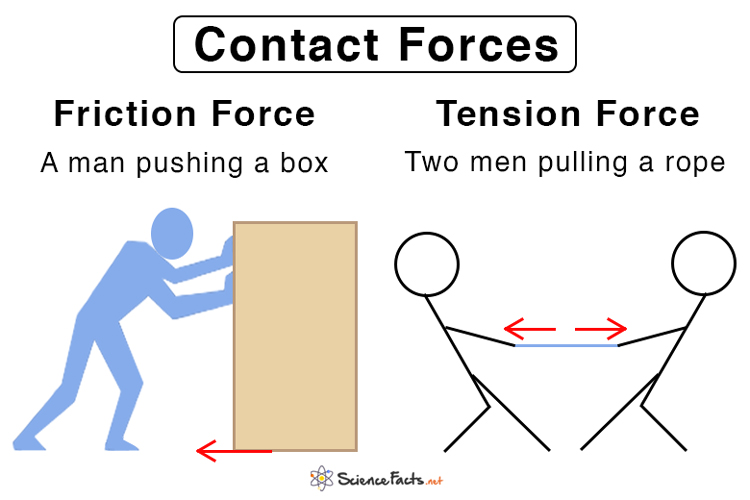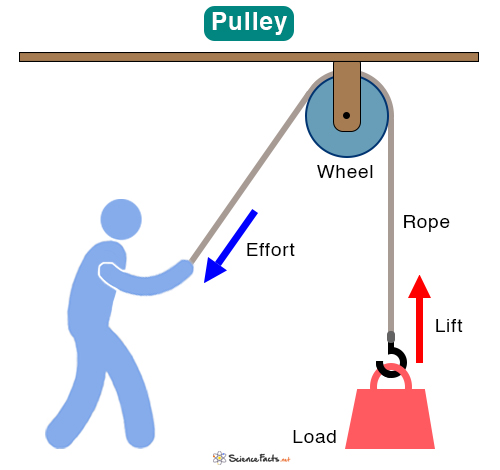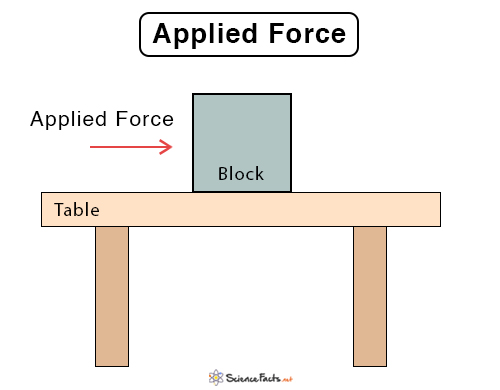Tensile Stress
Stress is defined as the force applied to a material divided by the area over which the force is distributed. When this force acts perpendicular to the surface, it is termed normal force. It can be further classified into tensile (pulling) or compressive (pushing) forces. Tensile stress is the tensile force acting per unit area of the surface, resulting in the elongation of the object. An example of tensile stress is stretching a rubber band.
Tensile Stress Formula
Tensile stress, denoted by the Greek symbol σ (sigma), is given by the formula:
σT = F/A
Where:
– F: Applied tensile force
– A: Cross-sectional area of the material
Unit
The SI unit of force is Newton (N), and that of area is square meter (m2). Since tensile stress is force over area, its unit is Newton per square meter (N/m2) or Pascal (Pa). High values of tensile stress are expressed in megaPascal (MPa).
1 MPa = 106 Pa
Factors Affecting Tensile Stress
1. Material Properties: Different materials respond to tensile stress based on their molecular structure and bonding. Metals like steel have strong metallic bonds, making them more resistant to stretching than polymers, which have weaker intermolecular forces. Metals can endure greater tensile stresses before breaking.
2. Temperature: Temperature variations can influence the tensile strength and ductility of materials. Tensile strength is the maximum amount of force a material can withstand before it breaks or permanently deforms. Ductility is a material’s ability to undergo significant plastic deformation under tensile stress without breaking.
As the temperature rises, materials like metals and polymers tend to soften, which lowers their tensile strength. Conversely, at lower temperatures, materials generally become more brittle and less ductile, decreasing their ability to stretch without breaking.
3. Cross-Sectional Area: The size and shape of a material’s cross-section affect its ability to withstand tensile forces. A larger cross-sectional area can distribute the applied force over a greater area, reducing the tensile stress experienced by the material. This is why cables with larger diameters can support heavier loads without breaking.
Tensile Stress Applications
- Structural Engineering: Engineers account for tensile stress when designing buildings, bridges, and other structures to ensure materials can withstand pulling forces without failure. For example, steel cables in suspension bridges are designed to handle high tensile stresses, allowing the bridge to support heavy loads.
- Material Selection: Understanding the tensile strength of materials aids in choosing the right material for specific applications. Materials with high tensile strength are selected for components that will experience significant pulling forces, ensuring durability and safety.
- Everyday Examples: Tensile stress is evident in common objects like ropes, cables, and clothing fabrics. For instance, when you stretch a rubber band, you are applying tensile stress. If you pull too hard, the rubber band will break, demonstrating its tensile strength.
Materials deform when subjected to stress. This deformation is known as strain.
Tensile Strain
Tensile strain measures how much a material stretches or elongates when tensile stress is applied. It is defined as the change in length divided by the material’s original length.
Tensile Strain Formula
The tensile strain, denoted by the Greek symbol ε, is given by the following formula:
εT = ΔL/L0
Where:
– ΔL: Change in length
– L0: Original length
Units
The tensile strain has the dimension of a length ratio, with an SI unit of meter per meter (m/m). Hence, it is unitless and is usually expressed as a decimal fraction or a percentage.
Example Problems With Solutions
Problem 1: A steel rod with a cross-sectional area of 50 mm2 is subjected to a tensile force of 1000 N. Calculate the tensile stress in the rod.
Solution
Given:
Tensile force: F = 1000 N
Cross-sectional area: A = 50 mm2 = 50 x (10-3)2 = 50 x 10-6 m2
Tensile stress (σ) is calculated using the formula:
σ = F/A
Substituting the values:
σ = 1000 N/(50 x 10-6 m2) = 2 x 107 N/m2 = 20 MPa
The tensile stress in the rod is 20 MPa.
Problem 2: A metal wire with an original length of 2 meters stretches by 1 millimeter when a pulling force is applied. Calculate the tensile strain in the wire.
Solution
Given:
Original length: L0 = 2 m
Change in length: ΔL = 1 mm = 1 x 10-3 m
Tensile strain (ε) is calculated using the formula:
ε = ΔL/L0
Substituting the values:
ε = (1 x 10-3 m)/2 m = 5 x 10-4 = 0.0005 or 0.05%
The tensile strain in the rod is 0.0005 or 0.05%.
Problem 3: A copper wire with a cross-sectional area of 0.5 mm² is subjected to a tensile force of 200 N. The original length of the wire is 3 meters. Calculate the tensile stress and tensile strain in the wire.
Solution
Given:
Tensile force: F = 200 N
Cross-sectional area: A = 0.5 mm2 = 0.5 x (10-3)2 = 5 x 10-7 m2
Original length: L0 = 3 m
The tensile stress (σ) is:
σ = F/A
Substituting the values:
σ = 200 N/(5 x 10-7 m2) = 4 x 108 N/m2 or 400 MPa
The tensile strain (ε) is:
ε = ΔL/L0
To find ΔL, we need Young’s modulus (E) for copper, which is approximately 110 GPa, and use Hooke’s Law, which is:
E = σ/ε
The tensile strain is:
ε = σ/E = (4 x 108 N/m2)/(110 x 109 N/m2) = 0.00363 or 0.363%
The tensile stress on the wire is 400 MPa, and the tensile strain is 0.00363 or 0.363%.
-
References
Article was last reviewed on Monday, March 17, 2025








